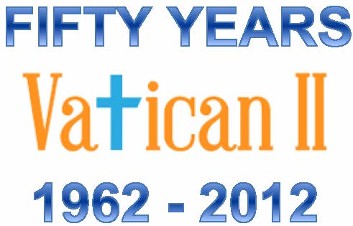You may recall that I planned on compiling and summarizing posts from The Catholic Conversation into monthly “compendium” announcements. I hoped that this would be an easy way to help readers navigate to earlier posts, which they might have missed but would find interesting. Unfortunately, I did not keep up with these monthly compendiums in the spring and summer. Fortunately, Sarah Moran has graciously agreed to help with our backlog of compendiums.
Honestly, the best way to keep track of all of our posts is to subscribe (for free) to The Catholic Conversation’s RSS feed through something like Google Reader. For the future, you can also subscribe to e-mail updates through feedburner by clicking on the “E-mail Updates” link (in the right side bar), but this will not send you past posts, only future ones. For people uninterested in RSS feeds, we will be working through our backlog of posts since Feb. 18 — the date of our last monthly compendium– and pointing out what topics we explored. This compendium begins where the previous one left off and takes us up through April 3, 2012. Thanks, Sarah for putting this summary together!
Monthly Compendium, Feb 18-April 3
Our previous monthly compendium can be found here. In this “Monthly Compendium,” we’re recalling key insights from the conversation in February and March. During that time, the Catholic Conversation engaged topics including religious freedom issues, the legacy of Vatican II, and the changing landscape of U.S. parish life.
With issues of religious liberty at the forefront of much news and Catholic discourse, several contributors explored, early on, sociological facets of the contraception and HHS mandate debate. Gary Adler analyzed some sociological roots of this debate, especially how governments constitutionally approach religion, tensions between the sacred versus profane, and the decline of religious authority. Brian Starks’ response highlighted how competing methods of framing this debate, especially those of Archbishop Timothy Dolan and the Obama administration, have evoked varied responses among Catholics. Carol Ann MacGregor proposed several sociological “starting points” for explaining why certain issues, such as contraception, dominate a religious organization’s discourse at particular stages in that organization’s life. Catholic identity politics, Brian added, must be included among factors that influence why an issue like contraception is being debated currently.
Both Carol Ann and Brian looked to the work of Melissa Wilde on Vatican II for answers as to the the sociological factors that influence why particular reforms come to the fore, not only at that council, but at any given time. Brian posted and readers responded with comparisons of the Vatican II moment and our present moment, especially how the effervescence and hopefulness of the former compares with the mixed signs of “deffervescence” in today’s American Catholic context.
Several contributors built on a central thread of previous posts: the changing landscape of American parishes. Gary Adler looked at an instance of communion denial in a Washington, D.C. parish to offer a fresh perspective on the Catholic Church as a bureaucracy, a helpful concept in understanding how priests and individuals negotiate between the wider Church’s unifying regulations and their local context. Michael Cieslak offered a parish typology based on measures of importance to unpack how parishes’ “corporate personalities” influence they type of parishioners that gravitate to them. Despite this diversity of parish personalities, David DeLambo suggested, there is a common and increasing trend toward participation and intentionality in parish ministries. Finally, Brian examined recent data on growing Hispanic populations and the impact of this demographic shift on U.S. Catholicism and parish life.





